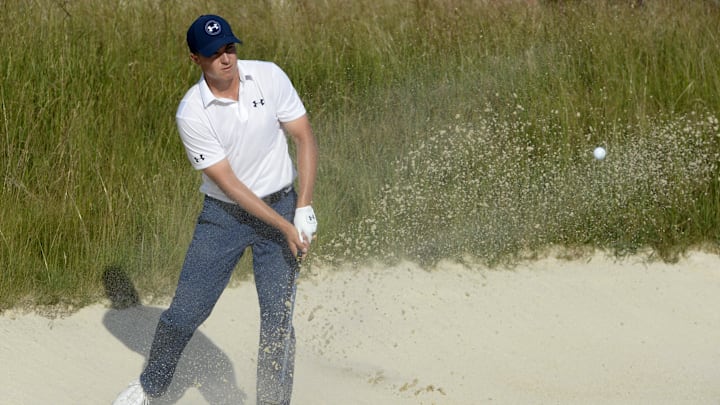Oakmont Country Club is widely regarded as one of the hardest golf courses on the planet. The thick rough, deep bunkers, and slick, undulating greens make it challenging for even the best players in the world to break par. And it's always been that way.
In fact, in 1953, professional golfers threatened to boycott the U.S. Open at Oakmont because it was nearly impossible to play out of the penalizing bunkers.
GOLF.com's Josh Berhow recently toured Oakmont's storied clubhouse and learned more about the original bunkers on the golf course. Decades ago, the club constructed its bunkers in a way that created a one-stroke penalty every time players found the beach.
"When the course was first founded, the sand bunkers was not your prototypical golf sand that you are used to today," Oakmont curator of collections, David Moore, said in GOLF.com's YouTube video. "The original bunkers here were filled with river sand from the nearby Allegheny River. It was coarse, it was dense, it was pebble-filled, and the way they raked it that really created a true penalty for finding a bunker is what they called the furrows.”
Furrows were deep, 1.5-inch crevices in the bunkers that ran perpendicular to the hole. The golf course utilized 50-pound steel rakes with four-inch tines to create these furrows, which were so deep they forced players to chip out sideways.
If a golf ball settled down in one of the crevices, you had no chance to go at the green. Designer Henry Fownes and his son, William, had to get creative to make Oakmont a U.S. Open test with no water on the property. But they may have taken it too far.
In 1953, when Oakmont was preparing to host its third U.S. Open, players were so perturbed by the deep furrows in the bunkers that they banded together in an attempt to boycott the tournament.
"[The bunkers] became such a controversy that in 1953 the players actually threatened to boycott the U.S. Open until there was an agreement made that the furrows would be taken out of the fairway bunkers but remain around the greenside bunkers," Moore said. "The Fownes' believed in a true Darwinian test of man versus golf course."
After a compromise was reached, Ben Hogan expertly navigated the furrow-less fairway bunkers to win his fourth career U.S. Open title. The golf legend finished the tournament at 5-under, while no other player shot better than par. Sam Snead was the runner-up at 1-over.
